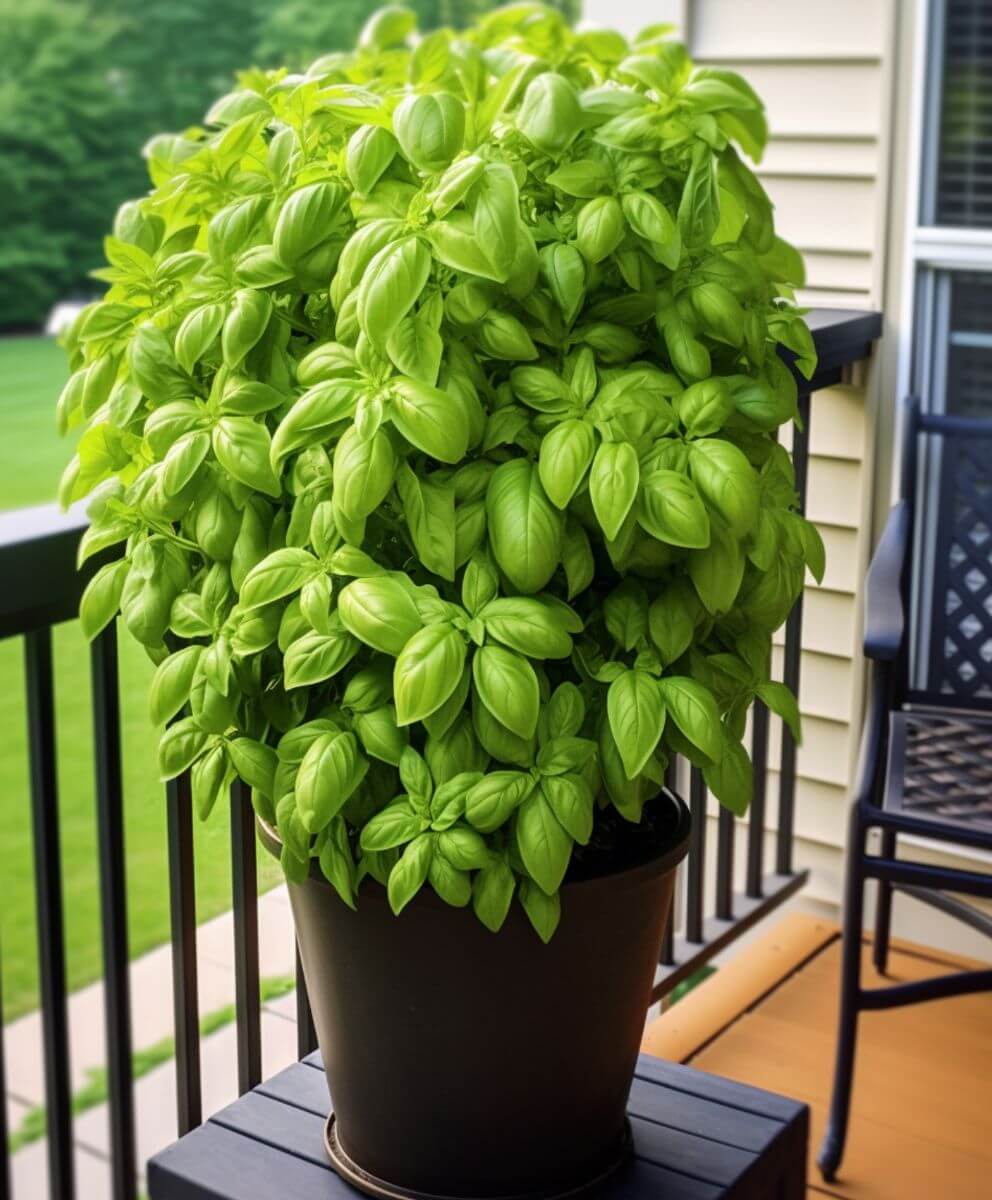Basil is one of the most beloved herbs, known for its aromatic leaves that enhance the flavor of various dishes. Growing basil in a pot can be just as rewarding as planting it in the ground, especially for those with limited space. Whether you’re an experienced gardener or just starting, this guide will walk you through the steps to cultivate a healthy and robust basil bush in a container. With these tips, you’ll be able to enjoy an ongoing supply of fresh basil for your culinary creations. Let’s dive into the process of growing basil in a pot!
1. Choose the Right Pot
Selecting the proper pot is crucial to ensure the health of your basil bush. Opt for a container that has good drainage holes to prevent excess water from accumulating. A pot with a diameter of at least 12 inches and a similar depth will give the roots enough space to grow and spread out.
2. Use High-Quality Potting Mix
A well-draining, nutrient-rich potting mix is essential for basil. Avoid using garden soil, as it can become too compact and hinder root development. A good-quality potting mix will help your basil thrive by providing the right balance of nutrients and air for healthy root growth.
3. Find the Ideal Location
Basil requires plenty of sunlight to grow well. Choose a spot for your pot that receives at least 6 to 8 hours of direct sunlight each day. In hotter climates, providing some afternoon shade can protect the plant from wilting and scorching.
4. Planting Seeds or Seedlings
There are two ways to start your basil bush: by planting seeds or using seedlings. If you are planting seeds, sow them about ¼ inch deep into the potting mix. For seedlings, carefully transplant them into the pot, being gentle with the roots to avoid damaging them.
5. Watering
Basil prefers consistent moisture but doesn’t tolerate soggy soil. Water your basil when the top inch of soil feels dry to the touch, but be careful not to overwater, as this can lead to root rot. Use a watering can or a hose with a gentle spray nozzle to avoid compacting the soil.
6. Fertilizing
To support healthy growth, feed your basil bush with a balanced liquid fertilizer every two to three weeks during the growing season (spring to early fall). Always follow the manufacturer’s guidelines for application to prevent over-fertilizing, which can harm the plant.
7. Pinching and Pruning
Regular pinching and pruning help your basil grow bushier and healthier. When your basil reaches around six inches in height, pinch off the top two sets of leaves. This will encourage the plant to branch out, preventing it from becoming leggy and ensuring a fuller, more productive plant.
8. Providing Support
As your basil bush grows, it may become top-heavy and prone to tipping over. To prevent this, consider adding support with a stake or bamboo rod. Gently tie the main stem to the support to keep the plant upright and avoid damage from falling.
9. Pests and Diseases
Watch for common pests like aphids and spider mites that can harm basil. Regularly inspect the leaves for signs of infestations, such as spots, webs, or discolored areas. If you spot any pests, treat the plant with a natural insecticidal soap or neem oil to keep them in check.
10. Harvesting
Once your basil bush is large enough, you can begin harvesting the leaves. Use clean scissors or pinch off individual leaves as needed. You can also cut entire stems just above a node (where leaves meet the stem) to encourage further growth. Be sure not to remove more than a third of the plant at once to allow it to continue growing healthily.
By following these steps, you can cultivate a thriving basil bush in a pot that provides you with fresh, flavorful leaves for many culinary creations. With a little care and attention, your basil plant will become a wonderful addition to your home garden.
